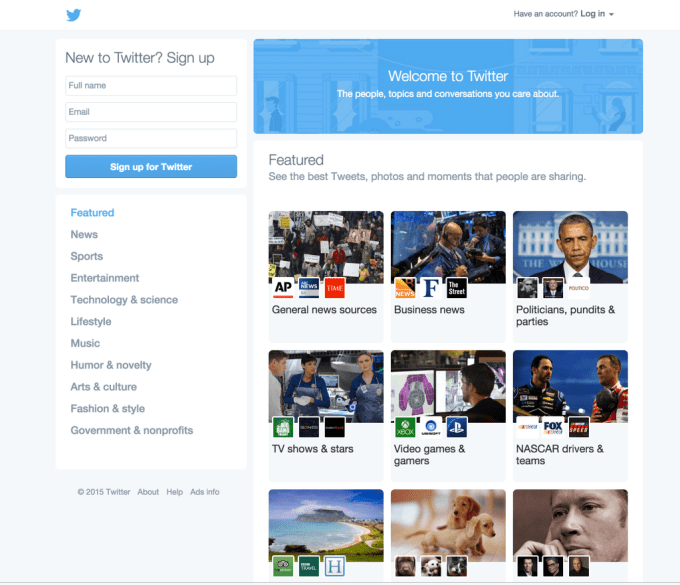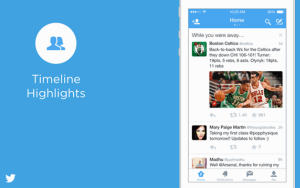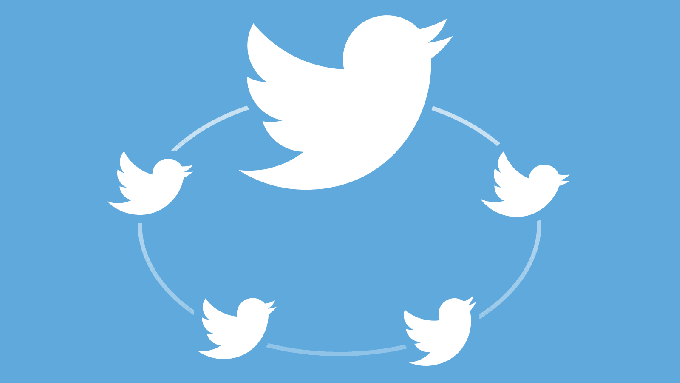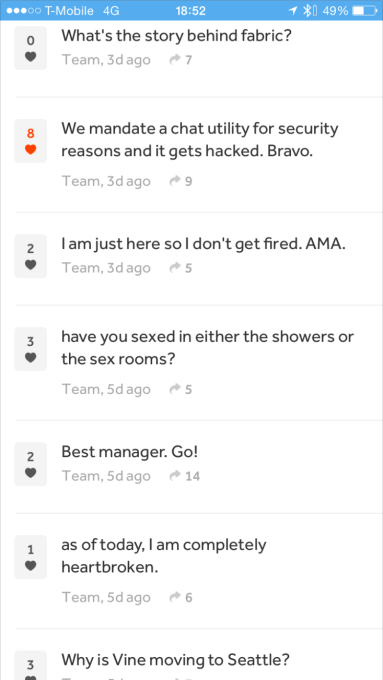Twitter is two things. It is a concept — everyone in the world connected in real time — that’s so obvious in retrospect that it is impossible to imagine it not existing. It is also a product that has had a rough time living up to that concept.
Much of its battles have had to do with convincing the market that it’s a sustainable business, as well as a usable product — finding equilibrium.
The company’s recent earnings beat estimates, proving that the revenue department under Adam Bain continues to provide lift to Twitter’s business. Stock is up several percent. Active user growth, though not exactly world-on-fire material, is measurable at 20% in the past year. The market seems to be responding to the rhyme that Costolo and company are spitting. But what about the product?
Over the past few weeks the company has been shipping a variety of new features, as it always does. But the particulars of those features had me curious about the decision making process for Twitter’s product.
Long awaited low-hanging fruit like group messaging features, tweet translation and native video on Twitter have all been shipped recently. As has the ability to ‘catch up’ on interesting tweets sent while users were away from the platform. And new versions of the homepage that are more welcoming are in preview for some users.
Crowd pleasers. Seemingly no-brainer products that took way too long to get out to users. Why now?
Curation
Being a public company requires a decisiveness that hasn’t always been evident due to Twitter’s penchant for experimentation — as well as its sometimes confusing decisions regarding which products to roll out. This fear of commitment impacts what kinds of stories are told about the future of Twitter.
I spoke to newly appointed VP of Product Kevin Weil and VP of Engineering Alex Roetter about how Twitter is currently making product decisions.
“For users that use Twitter and are able to set up an account and follow the right people, we hear over and over that it provides really disproportionate value for them,” Roetter says. “What Kevin and I are focused on is really building products for our users so that it’s easier for everyone to get into that state.”
That likely includes an algorithmically generated timeline for new users, reported by TechCrunch last September and now in active testing.

Roetter also notes that Twitter should be doing more work for its users, using the data at its disposal. He relays an anecdote about an earthquake that woke him at 3am, looking for news.
“I found it on Twitter a half hour before I was able to find it being reported by anywhere else, but it took work for me to do that. I had to know the right search term and that sort of thing. What I actually just want is my phone to send me a push notification as soon as Twitter knows something that’s interesting for me.”
Twitter is thinking a lot about, says Roetter, on how to build products that get content shared only on Twitter out to users without them having to do any work.
“Not everyone will have an account and a curated follower list. There might be people that experience Twitter through syndication, through logged out, or through a website, or they might actually be logged in and do the kinds of things that our core users do today.”
Video
Weil latches on to video, a product that has caused some confusion, even among Twitter employees. Way back when Twitter pulled video sharing services from its official apps, it was assumed that it would get native video sooner, rather than later. Some assumed that Vine would be the natural choice for this, but Twitter built its own engine. Likely to support advertising formats and native ad products that brands — and shareholders — were clamoring for.
“Clips from people like the NFL and the NBA, that people came across in their timelines. They’re re-tweeted and shared just in huge amounts… Anything you can do on your phone, you should be able to do on Twitter. Video is a major part of that,” says Weil. He says the results have been ‘great’ even in the first week but won’t share exact numbers.
Messaging
The response to group DMs has been fairly positive in my immediate network. I’m currently in a few running conversations with groups of people I don’t overlap with in any other spaces. Which has always been the draw for messaging improvements on Twitter.
There is a uniquely thin membrane between public and private on Twitter — a lower surface tension that facilitates starting a conversation privately from a public situation.
Weil agrees that this ‘graph’ of your connections on Twitter is what makes messaging a compelling focus area.
“The amazing thing about DMs is the graph on Twitter. It’s the fact that on Twitter, you’re not just connected to your friends. You’re connected to the people, the causes, the brands, and the products that you care about. Group direct messaging allows you to reach those users, have conversations, privately, that you really can’t have anywhere else,” says Weil.
If you’re thinking to yourself ‘I can’t wait to connect with brands’ then stay tuned, more on that lower down.
But if messaging is so core — and I think that it is and will be — to Twitter’s future, why did it take so long to get it shipped?
“A lot of what we’ve been doing has been focused on the parts of Twitter that are public. You’ve seen us make major, major strides there, in the richness of content on Twitter. It wasn’t, I think, even 12 or 18 months ago, tweets were all 140 characters,” says Weil. “Now, we’re super excited to get back focused on private messaging as well. You’ll see that focus continue. We’re just getting started with DMs.”
Process
Roetter points to changes in some engineering teams to indicate why they were able to ship DM improvements now.
“One thing that I spend a lot of my time on is really just enabling teams to be able to move as fast as possible. That means a very clear vision of what’s important at a high level but leaving a bunch of the details open so the teams can figure that out, making sure that we have the right talent on the teams…hiring world class people and then just making sure that everyone has the tools so they can do the best work of their career very quickly and easily. I spent a bunch of time working on that. I think that we showed with the DM team, they were really able to get a bunch of stuff out that earlier we hadn’t, by focusing on those things.”
There have certainly been changes to Twitter’s product team over the past year. Michael Sippey left in early 2014, when Twitter brought on Google veteran Daniel Graf. It’s not immediately clear why Graf only lasted six months, but Graf’s data-centric background and the rats nest of engineering problems at Twitter have both been cited to me by various sources. Regardless of what exactly occurred there, Twitter replaced Graf with Weil in October of last year, and since then the product releases have begun ticking over fairly regularly.
There are a couple of analytics packages that I use to track my Twitter usage and those have indicated to me that I’ve been using third-party apps less and less to access Twitter. That speaks to, I believe, the fact that the features Twitter has been adding have been genuinely useful. One could be cynical and point out that Twitter has chosen not to roll out support for many of those features to its third-party API, but it’s well within its rights to do so. And if it wants to move quickly while not worrying about breaking support outside of its own products then it makes a clinical sort of sense.
The types of products that Twitter is currently shipping and plans to ship soon has undergone a shift. Problems with the user on boarding process that seemed pressing two years ago are finally being fixed.
“If we’re building products that leverage those unique aspects of Twitter, then we’re building a product that’s going to make a ton of sense for our users. It’s going to be a great experience. It’s going to feel natural as part of Twitter. That’s really our philosophy.” says Weil in response to an inquiry about what has been changed in how they’re picking needs to fill.
”Over the last six months or so, Alex and I have just been super focused on helping the teams, removing roadblocks, aligning goals, and just helping everybody be more efficient. We have tons of great ideas. You’ve seen, I think, that that focus on cadence of execution now manifesting with a lot of great releases over the past couple months.”
Relevance Engine
Instant timelines for new users and the ‘while you were away’ feature exemplify actions that Twitter is taking to try to demonstrate its worth to the uninitiated. Most of the people that I know exist outside of the traditional ‘check Twitter every few minutes all day’ core group that has driven discussions about the product and what is ‘right’ for users. Many of them check the service a couple of times a day — and I’d wager that this is the way that a majority of people use it. This makes the ‘while you were away’ feature not only nice but indispensable for proving that it’s worth opening the app more.
“We spent a bunch of time doing research and really trying to understand our users,” says Roetter. “One thing we learned is what I was mentioning before, that when you get Twitter, it provides disproportionate value. We’re very focused on making sure that we can get everyone into a place where they can see all the value and all the amazing content that exists only on Twitter. That’s what led us down the road of instant timelines, which allows you to sign up to Twitter in an easier way without having to do work up front, and then also ‘while you were away. You see the best of Twitter — you don’t have to be checking your phone at exactly the right instant.
“Those are early for us still, of course. We haven’t seen all the gains that we’re eventually going to see for those, but they’re doing quite well so far.”
Just before it released earnings, Twitter announced that it had hired on Yoky Matsuoka from Nest to be its VP of Technology and Analytics. Matsuoka is highly regarded, and her hire was flagged up as an important get for Twitter by a lot of smart folks.
Roetter labels Matsuoka a “world class leader in every sense” and says that her hire was definitely about analytics, but also about ‘relevance infrastructure’ as a whole. That is, what is it exactly that is interesting to people on Twitter — and how to surface more of that.
“We have all of this great content, but today what…you actually see is a function of when you’re checking your phone, who you happen to follow, if you know the right hashtags, that sort of thing. If you pivot instead to this idea of organizing our content and providing the unique Twitter content to all the right people, at the right time, in the right format, whether it’s logged in, logged out, on your phone, in syndication, whatever it is, then there’s a bunch of relevance work that needs to go into doing that,” says Roetter. “Yoky has a ton of great experience on a bunch of different dimensions. We’re going to invest very heavily in doing that so we can provide this experience of very highly organized content to our users very easily.”
This pitch towards using math to help Twitter figure out what slivers of its billions of bits of content are relevant to each user, at what location and when is something I’ve been hearing about for some time now, but it’s encouraging to see them making high-profile hires in the area.
On mention of the efforts being put into this relevance machinery, Weil is quick to interject, noting that the real time aspects of Twitter are still ‘critically important’ to Twitter.
“As we talk about organizing content and relevance — the real time signal is still one of the most unique things that Twitter has, that nobody else has,” says Weil. “That’s still critically important to us. You’re not seeing Twitter move away from being focused on timely and compelling content.”
The real time nature of Twitter is absolutely its most important unique strand of DNA. No other major fiber of the Internet works this way, and removing it would leave a whole that would have to be filled.
But there’s no question that customized, algorithmic timelines are going to be a major focus of Twitter going forward.
“This isn’t a one size fits all experience. This is an experience and an opportunity that adapts to the different kinds of users that we have,” says Weil. “The way that we organize content for a brand new user, like with our instant timeline, may be different than what we do for a user who just came back to Twitter for the first time in a few weeks, may be different for the user that uses Twitter once a day and different again for the user that uses Twitter ten times a day.”
Local
One of the largest untapped arenas for Twitter is organized local information. The Twitter hive-mind is incredibly powerful — look at the recent fires that blazed in the Marina Torch tower in Dubai as an example of something where Twitter paints a portrait of an emergent event far more quickly and richly than any local news outlet could. And yet, Twitter has done next to nothing to really leverage that ability in its product.
“In general, when you think about organizing content, organizing content around you is a really compelling opportunity,” says Weil. “Alex’s [earthquake] example was exactly about local. There’s something happening around me. There’s an earthquake going on. I want to know more about it. We absolutely think that there are opportunities there. Events, just in general, are another great example of combining Twitter and a local or a geo signal to produce the really amazing experience. We’ll have more to say about that in the future.”
Weil and Roetter were unable to share exact numbers or future plans for product, which is understandable. But I was curious, so I did some digging around myself. Here are some things Twitter could focus on in the year ahead.

Twitter In 2015
According to sources, a new look for Twitter is on the way. The homepage currently being previewed — with a grid of users and activity — is indicative of what that new look may entail. Work is getting under way to change the way that Twitter looks and works substantially in 2015.
One of the major bullet points on Twitter’s roadmap for the year ahead is Identity, with a capital ‘I’. Twitter sits in a unique position in that its primary use case is public. This makes it much more suited to an online identity in some ways than the mixed public/private model of Facebook or the ‘username and password’ identity of Google’s sign-on services. If Twitter figures out a way to capitalize on that, then it could find another way to ensure its continued place in the daily habits of users that it manages to make stick.
There is plenty of competition here, even outside of the ‘social space’. Apple’s ID and payment ambitions are unlikely to stop at a ‘Pay’ button. But there is plenty of upside as well. Services that follow you around the web (and into other apps) are much more difficult to give up than an thing you check twice a day.
https://twitter.com/panzer/status/483063413535686658
Video will remain a focus, finally. Years after axing existing video services in its apps, Twitter is getting around to supporting the third leg of the core media tripod. The potential for users live streaming events happening in real-time are obvious — with protest events in the US and abroad last year only highlighting that.
And it’s not just user generated content. A few months ago I tweeted a link to a feature-length movie that was watchable right in the Twitter timeline. That was telling to me. What happens when you have whole films hosted directly on Twitter, purchasable with a tap? What about live streams of PPV events that can be purchased as easy as a pack of stickers in a messaging app? Interesting potential.
Speaking of messaging, we’re hearing that some of the work that Twitter is currently doing with DMs involves allowing you to message brands directly on Twitter to get answers to questions, access financial accounts and more. The backchannel isn’t just about people for Twitter, it’s also about connecting people with its biggest denizens.
Twitter’s Balancing Act
At times (quite a bit) the way that Twitter has chosen to roll out features and products has felt schizophrenic. And that’s no wonder, really, as the company now serves two masters. Its users and its shareholders. And while those interests may sometimes align, there is no question which is the more important to please for a public company.
This has led to rocky times when it comes to external, and even internal, perceptions of Twitter’s directional confidence.
Externally, there was plenty of jabber about CEO Dick Costolo being replaced, which Alexia dissected perfectly here. While I’ve heard Costolo described with plenty of colorful pejoratives, ‘incompetent’ has never been among them. That doesn’t stop employees from exercising their institutional right to complain, of course, and no employee perceives weaknesses like engineers. 
Recently, Twitter’s Secret Den became so crowded with people looking to vent their frustrations that Costolo took to the internal Twitter message boards to call it a ‘cesspool’. A source says it’s become somewhat of a ghost town since then.
I’m no financial wizard, so I can’t tell you if Twitter went public at the right time or too early. It has cash, it’s used that cash to make acquisitions and hires and to keep people around. But doing so absolutely removed a lot of options and made figuring out what it needed to be much more difficult. Even though Twitter feels like it’s been around a while, it is still in a gestational period in many ways.
And I’m also not convinced that the market understands, or will ever understand, the reason that Twitter exists. This puts Twitter’s leadership, including its product team, in the unfortunate position of having to continue to perform product prestidigitation to serve both masters.
I’ve made the case in the past that Twitter was allowing itself to be led around by a brass nose ring forged of testing data. The danger of making decisions in a data driven culture is that you forget the purpose of a consumer product is not to serve itself, it’s to serve the user.
Recent product decisions appear to be displaying more thoughtfulness about how to balance Twitter’s Dilemma. It remains to be seen whether the market will bear that, or if there is a way to truly find an equilibrium there. But there are some pleasant signs. We’ll see if the messaging products really do get the attention that Weil says they are, and whether video and onboarding continue to get polished.
Unfortunately, not all of the things that people like about Twitter are getting the royal treatment, which leads me to this:
Matthew: My last question is a pet question, which is ‘what’s up with Twitter for Mac?’
Kevin: Stay tuned. Do you use it?
Matthew: Yeah. I try to…It needs to be fixed. That’s all.
Kevin: Stay tuned.
Images: Bryce Durbin, Joseph Holguin































Comment